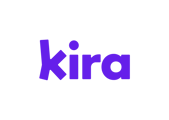Understanding the way your students can navigate the course and the settings you have to control that.
Moving Through a Kira Course
When you create a class section, you will have some control over how students move through the course. This control falls into two categories: course progression, which refers to what students must complete before they can move on, and content locking, which sets a spot that students will not be able to pass.
It can be a little bit of a learning curve to figure out what works best for your classroom setting, student behaviors, and preferred teaching styles, and we hope that this article will help you to make informed decisions?
Types of Course Progression
Step-by-Step
This is the most restrictive option for student progression; students must complete a step before progressing for the next step, and are not able to jump ahead to different units, lessons, or steps without completing all steps that came previously. Once completed, students can look back at any steps for reference.
When should I use Step-by-Step progression? If you prefer to keep students at mostly the same place in the course, you may enjoy step-by-step progression. It's also a very useful tool if your students are still learning metacognitive learning skills and may be prone to skipping necessary steps as a means to get ahead, but frequently end up lost because of what they have skipped. This method ensures students will complete all steps and will complete all steps in the intended order.
Lesson-by-Lesson
In this option, students must complete all steps in a lesson before they can progress to the next lesson, but within that lesson, they are able to move freely between steps. Once completed, students can look back at any lessons and steps for reference.
When should I use Lesson-by-Lesson progression? If you prioritize a learning strategy that involves students previewing summative tasks before beginning a lesson, this level of progression may be ideal for you. Students who are developing their metacognitive skills and understand how to use looking ahead to enhance their learning benefit from the extra freedom this progression provides.
Alternatively, if you plan to utilize whole-group instructions where students watch videos, learn skills, and complete task as a synchronous class but also have students who struggle with lateness or attendance, you may prefer this level of progression. Students will be able to join your class at the step you are on without completing prior steps in the lesson and can then attend to any missed steps at a later time before moving to the next lesson.
Unit-by-Unit
Selecting Unit-by-Unit means students must complete all steps in a unit before they can progress to the next Unit, but they have the freedom to move between lessons and steps in any order. Once completed, students can look back at any units, lessons, and steps for reference.
When should I use Unit-by-Unit progression? Unit-by-Unit offers similar benefits to Lesson-by-Lesson, but with further increased freedoms. Classrooms and students who benefit from looking ahead - and students who can monitor when they need to go back - will be best served in the Unit-by-Unit progression.
If you have a class where you anticipate students being at drastically different places for much of the time, Unit-by-Unit may also be preferred so that students can still access the step you'd like them to see during any whole-class instruction or discussion activities.
Open Progression
This is the least restrictive option for student progression; students can move freely between all units, lessons, and steps regardless of what they have completed previously.
When should I select Open Progression? If you are dealing with a class that you trust to be able to move across the entire curriculum, open progression is your best bet. This can be great for classes with transient populations - such as schools serving military families - who see students regularly joining and exiting their course, so that they can easily navigate to specific places in the course rather than being stuck at the beginning and working alone.
All About Content Locking
Our Content Locking feature can be set from the teacher view of a course. Clicking the button in the screenshot below will generate a pop up allowing the teacher to select the furthest step available in a course, with all other sections becoming locked regardless of your set course progression. The locks can be set per section, or specific locks can be given to individual students.
Why would I use both Course Progress and Content Locking?
This is a great question! While content locking prevents students from moving past a specific point - for example, being unable to move beyond step 1.2.6, course progression will still determine how students can move through the unlocked steps.
For example, you may have students who have not completed Unit 1. If you have step-by-step progression on with a content lock in lesson 2, students will need to complete each step in order to get up to the place you would like all students to stop. If the progression were turned to lesson-by-lesson, they could still move freely in lesson 1 but would need to complete it before moving on to lesson 2; they could move freely in lesson 2, but only up to the point of the content lock.
Content Locking + Course Progression
These two related features function very differently. It is likely that in your classroom, you will end up setting both course progression and content locking so you know both how your students are moving through the content, and where they are being forced to stop in the content.
We hope that these tools will help you keep your class on track where you want them, and will allow everyone in your room to learn and teach to the best of their abilities!

